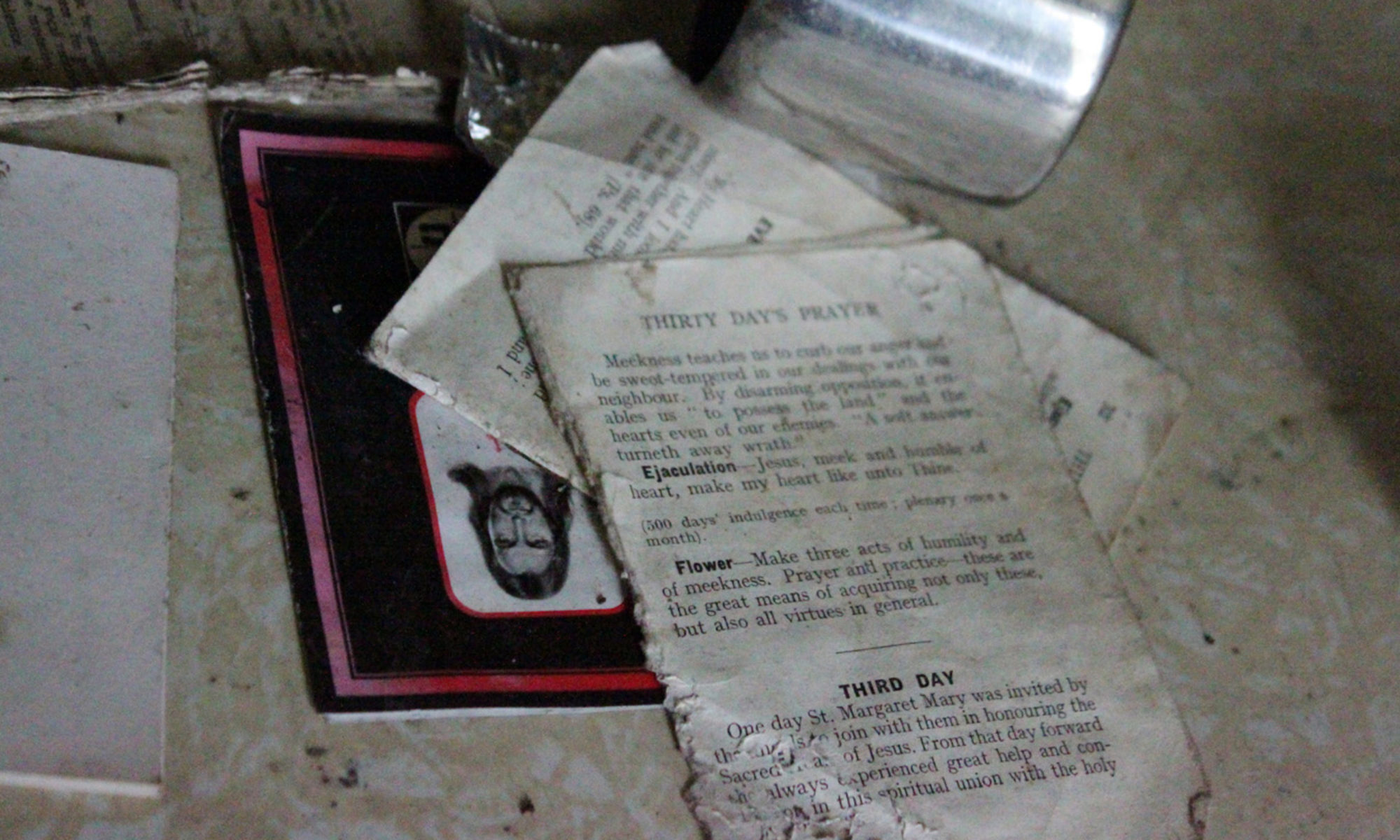The possibility to explore abandoned buildings in the UK is limited, because security is tighter than in Ireland. It is especially diffcult to get into them for a woman artist working on her own, and planning to spend a few hours inside (It is slightly easier for a small group of individuals to have a quick visit with just the aim of snapping a few photographs, though still a complicated expedition!). The more easily available buildings are mostly stripped down and void of artefacts, which make them visually repetitive quickly. The most visually interesting buildings are tighly locked down (the reason their interiors are in better condition in the first place!)
I have however identified an old orphanage (Silverlands Actor’s Orphanage in Surrey) whose ornamented décor would make a good fit to use in a composite video with my footage from Woodlawn House, a few asylums to continue the ‘Disciplinary Instutitions’ project, and a few abandoned cinemas that would be part of a new project. Abandoned cinemas and theatres would form a promising new project, both because of my interest in cinematic lighting and theatrical framing of my subjects in my lens-based work (as opposed to a straightforward documentary style), and because the Theatre Trust has an excellent database that helps find promising places.
I have applied for permission to shoot at the orphanage and two cinemas (the Astoria and Hippodrome both in Brighton), but the negotiations are slow and the success rate low. Unlike Ireland, there is no easily accessible directory of ‘protected structures’ in the UK, therefore there is no official organisation to systematically use as a first point of contact when trying to get in touch with the owners. The way I went about it was to contact the art services and also the planning services of the city or district council of the area where the building of interest is. If I know the exact street address of the building, I also browse recent planning applications that can be read on the website of the relevant local authority. If a planing application has been filed for the building (which is often the case for derelict buildings), it displays the name and contact details of the owner and/or the architect applying for renovation, whom can then be contacted directly.
